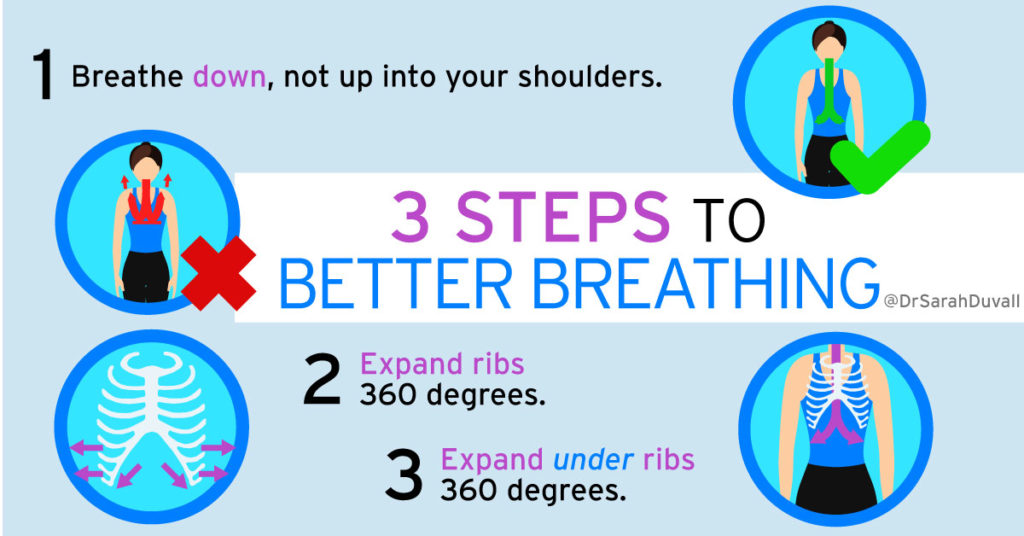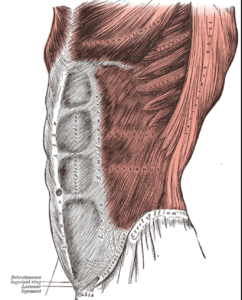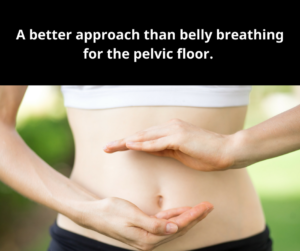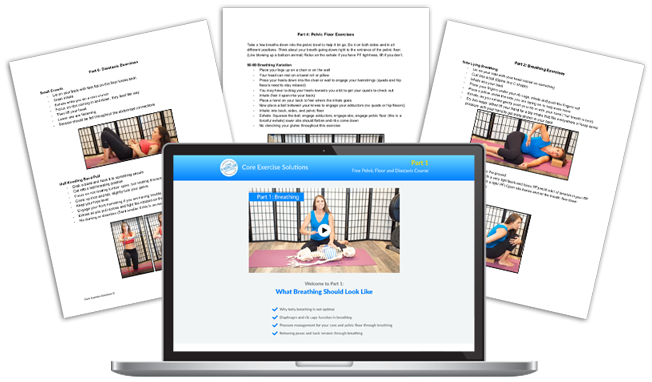Breathing is everything. Rather, correct breathing is everything.
It can be the difference between a super strong pain free body and one that's under constant cortisol distress, locked down by tight paraspinals and full of instability. Sure, you heard shallow breathing is bad, so you started letting your belly expand with every breath.
Well, not so fast, let me take you through why that's bad as well and what you should be doing.
Before we dive into all the inspiring details for great breathing, keep in mind that things often need to happen in stages. As you bring awareness to deep vs shallow, belly breathing at this stage is fine. You can't fix everything at once and going down instead of up with your breath is better! Once you develop awareness for going down, then it's time to refine it into a more 360 approach so you're not fully letting go of your abs with each breath while tightening your back (paraspinal) muscles.
Why deep breathing is great:
When you take a deep breath in and your diaphragm contracts down, it stimulates the vagus nerve. When the vagus nerve is stimulated, this sends a message back up to the brain telling you to relax. Lots of wonderful things happen when we relax. We sleep better, we poop easier, sex is better and food digests better.

So, what happens if you have a shallow breathing pattern and the top of your chest and shoulders move primarily when you take air in? Say hello to your friend cortisol -- your body is thrown into a flight or fight stimulus! No one needs that extra stress, life is hard enough, so let's break it down a bit more and get you into a correct deep breathing pattern.
Step #1 is making sure your breath goes down versus up. Develop awareness for deep breathing.
Correct breathing is not as simple as making your belly rise and fall.
Sure, that's a better start than breathing into your shoulders, but too much belly movement can prevent your abdominal separation from healing and may cause back pain, hip pain, and core instability.
When you take in a breath of air, you should see your chest expand (that is where your lungs are located, after all) and ribs move out to the side. If your chest is tight, it makes this expansion difficult. That's how you end up with too much belly, the pressure is either forced up or down since it can't go out. Our body naturally follows the path of least resistance. If your chest is tight and doesn't expand and your abs are weak, then your belly says, "I can easily expand without any effort. Who needs core control, anyhow?"
Test #1: Place your hands surrounding the bottom of your rib cage and take in a big breath of air. Your ribs should move out in the front, sides, and back. Did you feel them move? They should move a lot! Maybe you only felt some of your ribs move? Did the ribs on the back right side, under your thumb not move as much as the left side? No? Then there's the source of that neck or midback tightness you've been feeling. Fascinating, isn't it?
Step #2: Get your ribs to expand out in a 360-degree fashion when you breathe.
Test #2: Did your diaphragm contract down in a deep breathing pattern with great rib expansion? Did you feel expansion right under your ribcage or did your ribcage move followed by your shoulders and your belly sucked in? Now, I want you to drop a couple of fingers down under your ribcage while leaving one or two on top. Take a deep breath in. Did it expand out into your fingers right UNDER your ribcage?
This is a hard thing to get because it takes core strength. If you don't have a strong core, then there is nothing to resist your belly going straight out with each breath. Without that resistance, your ribcage doesn't need to expand to get in air. Without that expansion, you don't get eccentric length to your TAs (deep inner core) and obliques every time you take a breath. Don't get me wrong, I want to see SOME belly movement with each breath in, but your belly shouldn't be the only thing that moves.
To get great rib expansion, you need eccentric TA and oblique strength. Your core needs to be able to maintain tension while letting your ribs expand. (If you only expand in the front, then that's lengthening the rectus and a lot of fascial connections. No wonder so many people end up with abdominal separation that won't heal. Belly breathing expands right into that separation, so it never gets a chance to heal.)
A muscle must first lengthen to get a good contraction and if we look at postural core control, especially during exercise, then you need great rib expansion. If your belly is the only thing that expands when you breathe, you will never be able to sustain correct core tension to perform exercises that require lumbopelvic stability (a strong core).
This is a common issue with people that have tightness or pain in their piriformis, hamstrings or low back after things like squats and deadlifts. Does your exercise leave your SI joint aching? That might have to do with your breathing system.
Step #3: Get 360-degree expansion of not only your ribcage but directly underneath your ribcage, as well.
These proper breathing mechanics carry over into all aspects of core function, from lifting, to picking up kids, to not having aches and pains all the time.
Tight Pecs? Scapula winging a bit? Tight low back? Head not staying in line with your body during exercises? You should look at your breathing pattern first and see how your breathing could be affecting your core control and making other muscles pick up the slack. Back body expansion is extremely important for this!
Correct breathing is not belly breathing. It's a 360-degree expansion of not just your ribcage but your torso as well. So, ditch the 100% belly breathing and watch your core muscles find a new level of strength and your body a new level of stress relief!
The last step is learning how to use this breathing system to brace for exercise. If you get the correct expansion of your entire abdominal wall, you will be able to maintain some core tension through an exercise while breathing for both the inhale and exhale and man it will take core work to a whole new level.
Without this tension and proper expansion on the inhale, you will not be able to maintain spinal stability and your body cheats to make it happen by either going into a shallow breathing pattern or holding your breath.
There is a time and place for proper breath-holding, like when you are maxing out your deadlift, but if you are suffering from back or neck tightness, hernias, abdominal separation or pelvic floor issues, you really need to take a closer look at how you manage pressure in your core and why that mis-utilization of pressure is causing issues.
Ready to utilize a 360 breathing pattern while asking a lot from your diaphragm? Try this exercise and you will see why deep breathing is way more core intensive than any other breathing pattern. As a result of that intensity, you will build the strongest abs of all time!
**Side Note: If you have prolapse or a hernia, you need to make sure your core and pelvic floor is timed with your diaphragm and firing correctly before attempting any deep breathing with a balloon. If done incorrectly, it can make you worse.
Proper breathing not only stabilizes but leaves your neck and low back feeling amazing as well!! Happy Breathing!
*[By User Theresa knott - Originally from en.wikipedia; description page is (was) here Drawn by Theresa Knott, CC BY-SA 3.0, https://commons.wikimedia.org/w/index.php?curid=1101004]
Free Pelvic Floor Educational Series
Dr. Sarah Duvall, PT, DPT, CPT and the CES Team have helped thousands of women create the strength and stability needed to overcome common and not-so-common pelvic floor issues.
Join us today for this 4-part Pelvic Floor Video Series, absolutely free.
We don't spam or give your information to any third parties. View our Terms of Use and Privacy Policy.

Working with pregnant and postpartum clients/patients?
This 6-part course offers key takeaways on breathing, pelvic floor strengthening and diastasis recovery. Sign up and start learning today!






